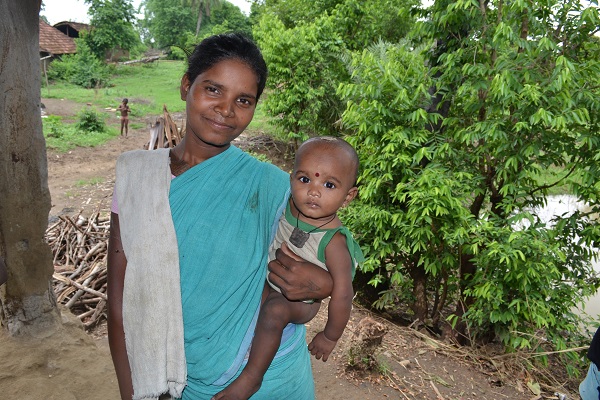The majority of the population has very little access to quality health facilities or information. This, clubbed with poverty, hunger, poor hygiene and poor drinking water availability, has a serious impact on the current health state of the target community.Tribal feuds and poverty have severely affected the area, with villages riddled with malnutrition and diseases.
25-year old Shanti Tudu lives in the Pakur district, in a village very hard to reach, with extremely bad roads. Because of the difficult accessibility, and the gender disparity and low status of women and girls – making their health a very low priority – the Village Health and Nutrition Days (VHND) would rarely take place. This changed when our partner NEEDS deputed a community mobilizer in the village, who explained the importance of VHNDs and supported the local health workers in preparation and data compilation. Social mobilization has proven to be an approach that empowers people to participate actively in the development processes and an essential tool to mobilize the isolated, passive and poor members of the society in demanding the creation of and access to services.

The community mobilizer has established a good rapport with the women groups and used posters, pictures, handouts, and flip books to communicate messages and spread awareness on health and nutrition, clarifying misinformation and assisting them in the implementation of behavioral changes. This has helped health workers to feel comfortable with their new role of a and nutrition educators and was replicated through the larger sections of the village community.
Now that VHNDs take place regularly, Shanti – who looks much happier in the photo above – can take her baby to the camp, and benefit from services such as registration, antenatal care, growth monitoring, counselling, immunization and drug distribution.




